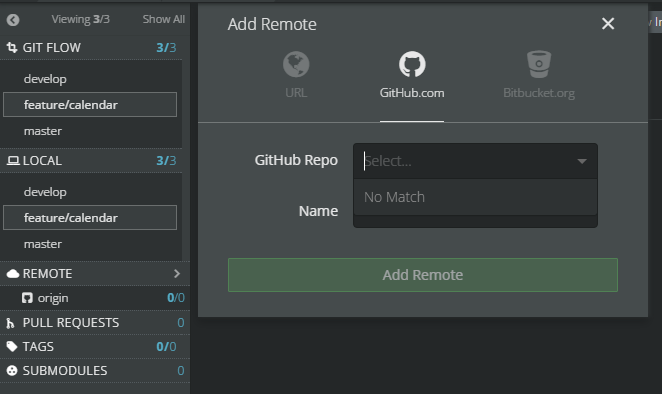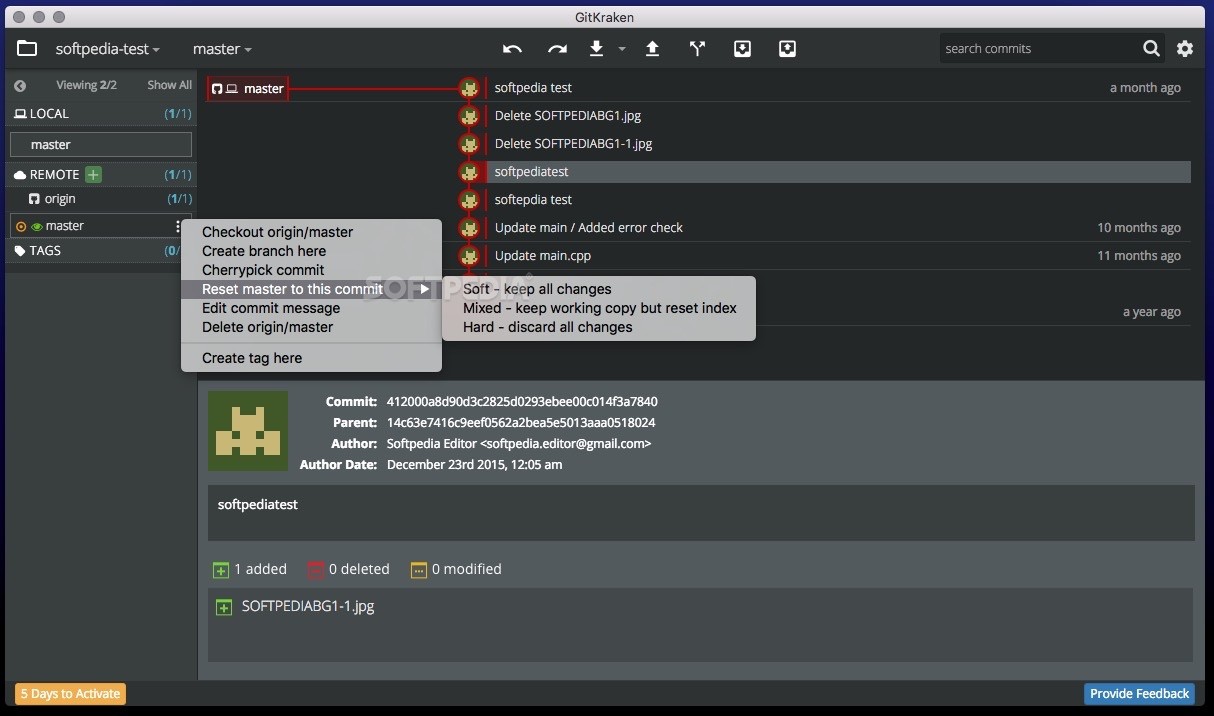
- GITKRAKEN PUSH TO MULTIPLE REMOTE INSTALL
- GITKRAKEN PUSH TO MULTIPLE REMOTE CODE
- GITKRAKEN PUSH TO MULTIPLE REMOTE LICENSE
GITKRAKEN PUSH TO MULTIPLE REMOTE CODE
We recommend using the Visual Studio Code Remote-SSH extension to connect to.Ĭlick the Download Now button at the upper right hand of the pageģ. Select your platform and click DownloadĤ.
GITKRAKEN PUSH TO MULTIPLE REMOTE INSTALL
Run the the GitKrakenSetup.exe to install GitKrakenĪdd the VM to AD, Enable Identity-based authentication for Azure Files and. Once you have GitKraken Installed you will need to configure a few things in order to generate your SSH Keysġ.
GITKRAKEN PUSH TO MULTIPLE REMOTE LICENSE
Enter your Email Address, Name, Read and Agree to the End User License Agreement and click the Register button. (An email will be sent for you to verify within 5 days).Ģ. Click the gear icon in the uper right corner and select Authentication from the menu on the left.ģ. Deselect the Use local SSH Agent checkbox and click the Generate button to create Public and private SSH Key that GitKraken will use.Ĥ. Upload your newly created SSH Key to Pantheon Choose a location to save the file, save it, open it and copy the SSH Key.

Now that we have our SSH keys configured locally with GitKraken, it's time to get them uploaded to Pantheon.Ģ. Clone your remote GIT repository to your local machine Click the account tab on your dashboard, select SSH Keys from the menu on the left, paste your SSH key into the text field and click the Add Key button. Now that we have our SSH keys uploaded to Panteon we can use GitKraken to clone our remote repo to our local machine.ġ. Switch the connection mode from SFTP to Git and copy the git clone URL Click the Sites tab on your Pantheon account and click on your Drupal 8 siteĢ. (*note: After the Drupal install we will have have 1 file to commit SFTP mode. You will not be able to switch to Git mode until this change is commited)ģ. Select Clone from the menu on the left, select a location for your local repository, paste in the clone URL from Pantheon and click the Clone the repo! button.Ĭongratulations! You now have your Git workflow completely set up and you are ready to start version controlling your work! Open Gitkraken and click the folder icon in the upper left corner.Ĥ. In next weeks final installment of our Drupal 8, Pantheon, GitKraken series we will take a look at exporting, importing and version controlling your sites configuration.I ran into the same problem with GitKraken when adding multiple push URLs to a single remote. The issue seems to be tied to how GitKraken internally chooses the push URL to use when pressing the Push button. Through some experimentation I found that GitKraken always defaulted to the last push URL listed in the config when viewing "git remote -v". There doesn't seem to be any way to get that button to use multiple URLs, even if properly entered in the config.

You can also see that the last push URL in the config matches the push URL seen in the GUI for that remote. I ultimately decided not to use multiple push URLs. Since I couldn't push changes to both remotes simultaneously using the Push button, I was concerned I would forget to push to the additional repo via terminal. There wasn't any advantage to using multiple push URLs if I had to use the terminal as a secondary step. Instead I simply added my additional remote and am now pushing to it manually via terminal. I'm using the push button in GitKraken first to push to the primary remote, and then am opening up the terminal to push to the additional remote. The main reason this is better is that by having the additional remote(s) actually added in GitKraken, you can see where that remote is relative to the other remote and local. It acts as a constant reminder of the additional remote, so you don't forget to push to it as well. I think this is also safer than pushing to two remotes simultaneously. Even if it did work in GitKraken, you would have no indicator that the push completed to the additional remote since it occurs in the background.

Having the additional remote(s) added in the GUI makes a lot more sense to keep them in sync. Yes, you will need to push to those remotes separately, but at least you can see them this way and know which commit they are at. If anyone reads this, that is what I recommend. Forget about pushing to multiple remotes at once. It isn't as advantageous as you may think.


 0 kommentar(er)
0 kommentar(er)
